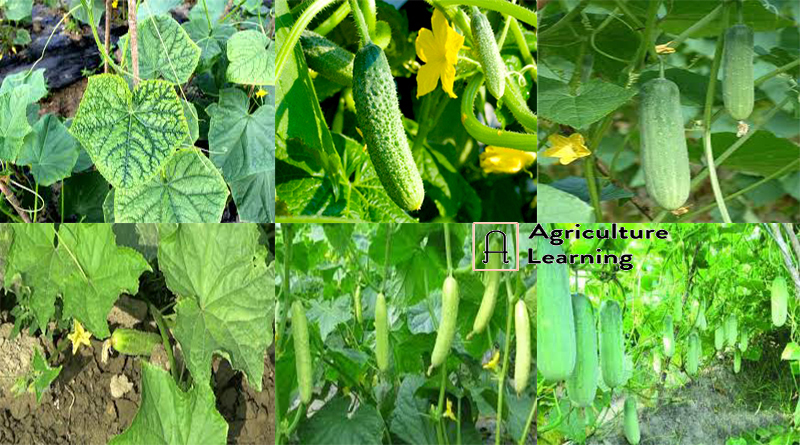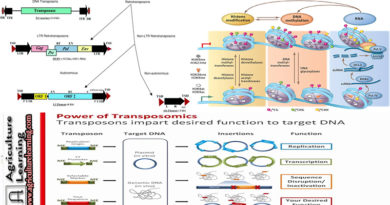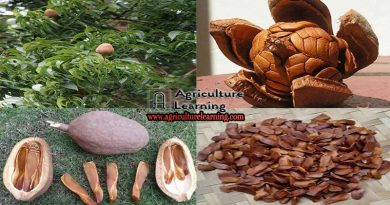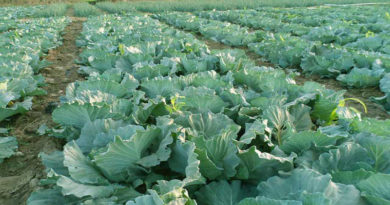Cucumber Production Technology, Pest and Diseases Management
Cucumber (Cucumis sativus) is one of the famous and a widely cultivated vegetable plant. It belongs to the gourd family of “Cucurbitaceae” genus of “Cucumis”. It is basically a creeping vine that bears cylindrical fruits that are used as vegetables. It is also one of the most popular vegetables in Bangladesh. Oils extracted from cucumber seeds are used for medicinal purpose. The cucumber is originated from southern Asia. However, it is grown in all of the countries in the world. Cucumbers can be grown in Greenhouse, polyhouse and in hydroponic system as well.
Varieties: In Bangladesh, some commercial varieties available in the market from local and exotic sources are Alavi F1, Green King F1, Ever Green F1, Shila, Shital, Beer Shrestha, Sufala, Heera F1, Devy F,1, Dynasty F1 etc.
Moreover, Japanese Long Green, Straight Eight, Balam Khira peons, Priya, Pusa Soajog and Poinsettee are the mainly cultivated vaeieties in india.
Local name of Cucumber: Pipigngna (Sinhalese, Sri lanka), Troh Sork (Cambodian), salatalik (Turkish), Timun (Malay), Kyuri (Japanese), The Khwar (Burmese), Kakdi, kheera (Urdu), শসা (Bangladesh).
Land and soil: In Bangladesh, High to medium high land is required for cucumber cultivation. Silty-loam and clay-loam soil with a pH 6.5 or slightly above containing sufficient organic matter are the most suitable for production of cucumber. It is also be grown in sandy or sandy-loam soil.
In India, cucumber can be cultivated in wide range of soils from sandy loam to heavy. Moreover, Sandy loam soils, clay loam soils rich in organic matter with good drainage are best for its cultivation. Soil pH between 6.0 and 7.0 is best for getting good yields.
Seed rate: 2.5 to 3.5 kg seed is required for one hectare of land.
Seed treatment: Seed treatment with Provax or Captan 2 g for 1 kg seed.
Time of sowing: February to March is the optimum time for seed sowing.
Land preparation: 20 cm raised and 1 m width beds are to be prepared depending upon the land size. Pits of 40 x 40 x 30 cm size are to be prepared depending upon the land size. Pits are to be prepared 1 m apart for fresh fruit production and 1.5 m apart for seed production in a single line along the bed. The top of the pit is to be kept little bit above the bed level. Centre of pits are to be kept 40 cm apart from the bottom side along the irrigation/drainage channel and 50 cm and 75 cm from the top bottom side of the bed for fresh and seed production, respectively. Between beds 50 cm wide space is kept for irrigation and 30 cm for drainage alternately.
Sowing method: Seeds are to be sown in the polybag/plastic pots. After that 17 to 20 day sold seedlings should be planted in the pit.
Fertilizer dose and application method:
| Manure/ fertilizer | 10 days prior to transplant/pit | At transplant (g/pit) | 10-12 DAT*
(g/pit) |
24-27 DAT
(g/pit) |
38-42 DAT
(g/pit) |
54-58 DAT
*(g/pit) |
68-72 DAT
(g/pit) |
| Cow dung/ compos | 10-12 kg | – | – | – | – | – | – |
| TSP | 50g | – | – | – | – | – | – |
| MP | 40g | – | 20 | – | – | – | – |
| Urea | – | 10-12 | 20 | 20 | 25 | 30 | 25 |
| Gypsum | 40g | – | – | – | – | – | – |
| Zinc | 3g | – | – | – | – | – | – |
| Sulphate | – | – | – | – | – | – | – |
| Boric acid | 3g | – | – | – | – | – | – |
*DAT- Days after transplanting
Irrigation: As and when necessary
Intercultural Operation:
Supporting: Support is necessary for fresh fruit production. For this, net–wire or thin rope of jute and bamboo may be used as trellis or macha.
Weed Control: As and when necessary.
Pest Management: Major insects and control measures is given bellow-
Red pumpkin beetle
Control measures:
- Cover seedlings with mosquito net for 30-35 days.
- Killing of adults by catching with hand or sweeping net.
- Spray Nitro 50 EC or Quinalfos @ 1.5 ml/l of water in case of severe infestation.
Cucurbit fruit fly
Control measures:
- Use of bait traps with synthetic pheromone and MSG (Mashed Sweet Gourd).
- Clean cultivation. • Bagging of fruits just after fruit set for 10-15 days.
Mite
Control measures:
- Spraying with Neoron/Tork
- Spray Omyties etc. @ 1 ml/litre water at 15 days interval till control.
- Spraying of Neem oil @ 5 ml/l of water + 5 ml trix at 7 days interval.
Leaf miner
Control measures:
- Hand picking of infested leaves.
- Use of yellow sticky trap.
- Spraying of Neem oil @ 5 ml/L of water + 5 ml trix at 7-10 days interval.
Epilachna beetle
Control measures:
- Collection and destruction of eggs mass, larvae, pupae and adults at the initial stage of infestation is the best and very effective means for the management of epilachna beetle.
- Red bug and pentatomid bug are the predators of the larvae of epilachna beetle. Although their predatory rate is not very good but if they can be conserved would be helpful to kill the larvae of epilachna beetle.
- Spray with Neem oil 5 ml + 5 ml trix @ per litres of water at 7 days interval.
- If less than 20% leaves of the infested plants are damaged, no insecticidal spray is necessary. In case of severe infestation, Diazinon 60 EC or Sumithion or Folithion 50 EC or Melathion 57 EC @ 2 ml/litres water could be sprayed 2 times at an interval of 10 days.
Major diseases and control measures:
Powdery mildew
Control measures:
- Crop rotation and clean cultivation.
- Spray Thiovit @ 2 g/litre water at an interval of 7 days till control.
Downy mildew
Control measures:
- Seed treatment with Provax 200 @ 2 g/kg seed.
- Crop rotation and clean cultivation.
- Spray Ridomil @ 2 g/litre water at an interval of 7 days till control.
Anthracnose
Control measures:
- Seed treatment with Provax 200 @ 2 g/kg seed.
- Crop rotation and clean cultivation.
- Spraying with Tilt @ 2 g/litre water at an interval of 7 days.
Mosaic virus
Control measures:
- Infected plants should be removed and destroyed.
- Use of disease free seed.
- Spray Marathion @ 2 ml and Chess @ 1 ml/litre water for aphid control at 7 days interval and 15 days interval respectively.
Fruit rot
Control measures:
- Soil application with Tricho-compost @ 2.5 t/ha.
Fusarium wilt
Control measures:
- Grafting 12 days seedlings with 15 days Bottle gourd or Pumpkin seedlings.
- Can be controlled raising soil temperature up to 32-33o C using plastic mulch.
- Can be checked to some extent by dranching with Captan @ 2 g/litre water.
- Seed treatment with Vitavax 200 @ 2 g/1 kg seed or Use of resistant varieties.
Root knot nematode
Control measures:
- Soil management with poultry liter @ 5 t/ha, mustard oilcake @ 600 kg/ha, Tricocompost @ 2.5 t/ha.
- Use of grafted seedlings
Harvesting and Seed preservation: Any malformed or deformed fruits should be removed earlier and only healthy fruits are selected for seeds. The fruits are allowed to ripen fully. The factors to judge full maturity in cucumber as follows:
- Yellow or brown or brownish –yellow or resetting skin colour of fruit.
- Carpel separation in transverse section of fruit.
- Fruit stalk adjacent to the fruit withers.
- Mature seeds separate easily from the interior flesh.
After full maturity fruits are harvested and allowed to keep 5-7 days for post-harvest maturity in a shade dry place under ordinary condition. Moisture content of the seeds should be 7% for safe storage. The well dried seeds are kept in containers and stored in a cool, well ventilated place.
Health benefits of Cucumber:
- Cucumber reduces cholesterol and control blood pressure.
- Cucumber contains a range of B vitamins, vitamin A, and antioxidants, including a type known as lignans.
- Cucumbers may play a role in controlling and preventing diabetes. It contains substances that may help lower blood sugar or stop blood glucose from rising too high.
- Cucumbers may have anti-inflammatory benefits. Inflammation is a function of the immune system.
- It helps in fighting cancers.
- Cucumber aids in weight loss and digestion.
- Cucumber promotes joint health, relieve gout and arthritis pain.
- Cucumber rehydrates body and replenish daily vitamins.
- Cucumber is good for skin and hair health.
Source: BARC




